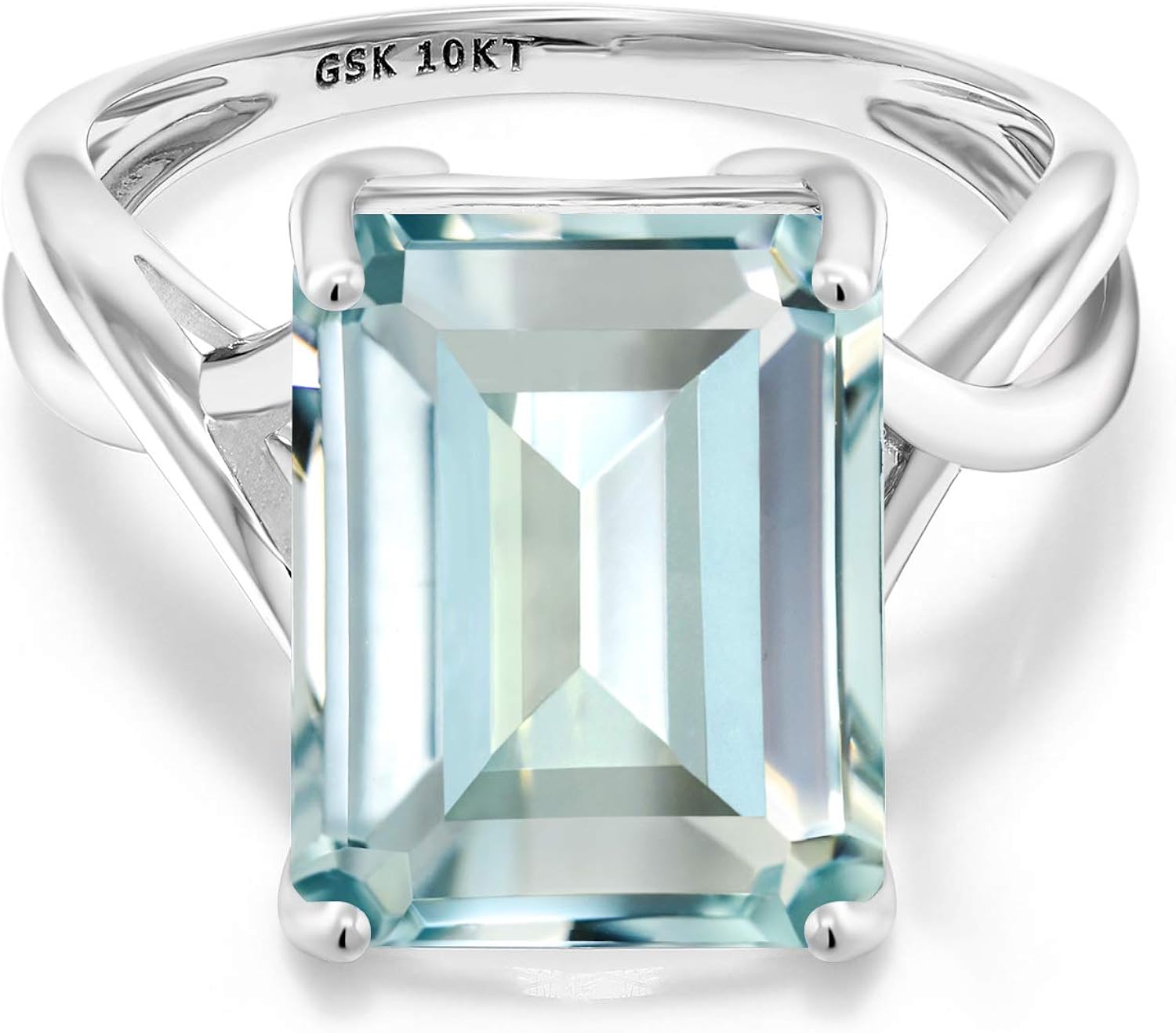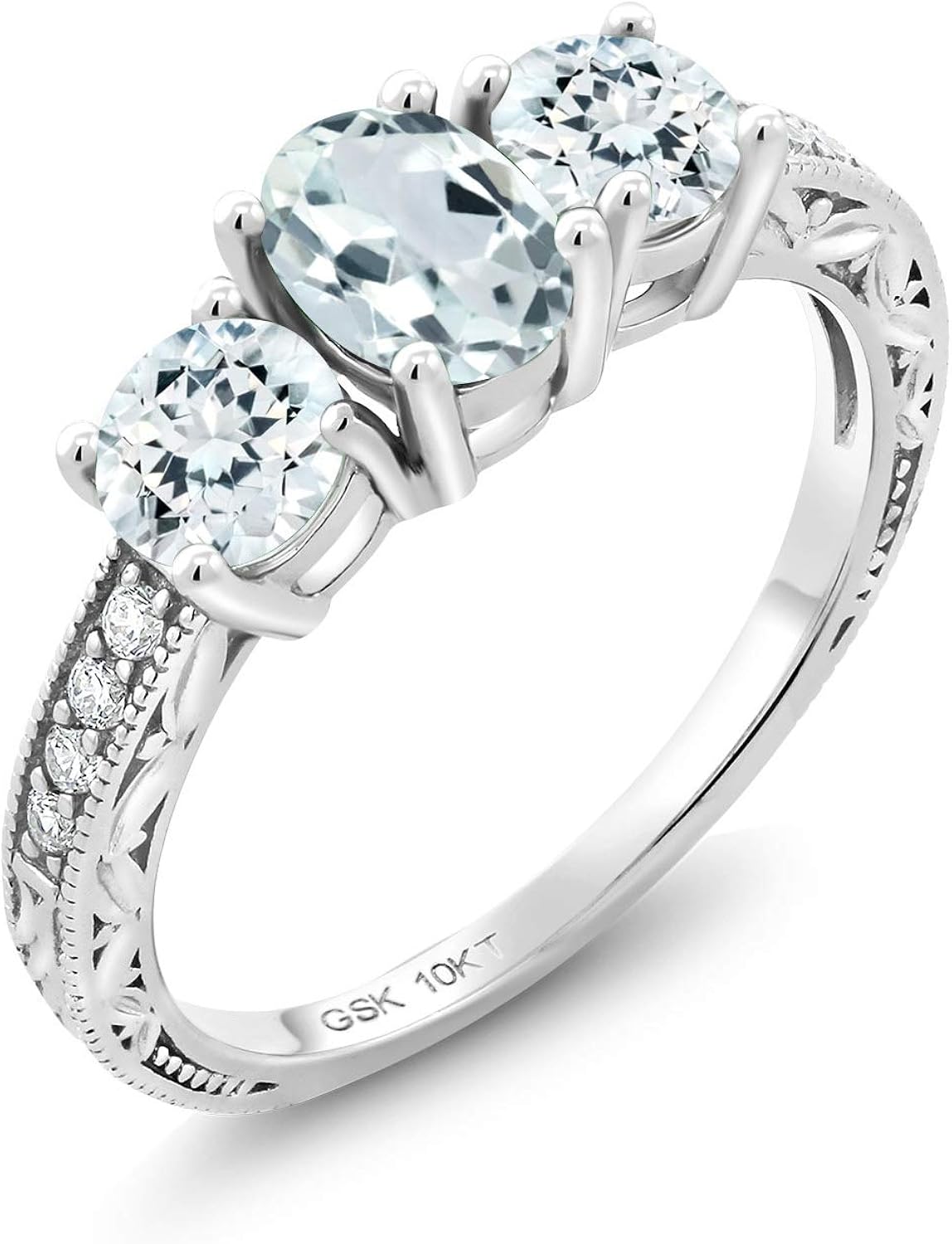Our guide to the fashion movement of the roaring ‘20s, with a special feature of March’s birthstone, aquamarine.
Read time: 7 minutes
Color of the sea
“The Color of the Sea” or as we like to call it, Aquamarine, is the star of today’s article. The birthstone of March is here to refresh us with tranquil and relaxing energies. Aquamarine appears in a beautiful range of blues, from the almost transparent to a rich royal hue. In days of old, sailors and voyagers of the sea used it to encourage smooth waters and a safe passage. In the 2020's, you are more likely to see aquamarine being used for crystal healing treatments and in gemstone jewelry. But let's take it back to the 1920s, when attitudes towards women's rights, and fashions, were changing.
Tides of change
Women were changing the rules of fashion in the 1920's. On one hand you had the flappers, young women known for their energetic freedom, embracing their growing independence and a lifestyle viewed by many at the time as outrageous! You also had the suffragettes, fierce activists campaigning for voting rights for women. These ladies were not interested in the tiaras, cameos and other staples of the Victorian times before. They wanted new styles that complimented their new state of mind. Luckily, the Art Deco movement was taking off and with it, new jewelry trends.

Art Deco
Art Deco is a style that emerged in 1925, originating at the World's Fair held in Paris, France. It remained popular until the 1930s and has since re-emerged today in trendy vintage jewelry. There are certain design features that characterize Art Deco and can be seen across architecture, graphic design, clothing and, our focus, jewelry.
Here are the main features of Art Deco jewelry.
1) Contrasting Colors
Bold color contrasts were a signature style of the Art Deco era. Jewelry designers achieved dramatic results using diamonds with a variety of colorful gemstones. Aquamarine was particularly popular and elegantly compliments sapphires, rubies and emeralds.
There’s no bolder contrast than stark black and white and this combination is a telltale sign of the Art Deco style. This look was achieved by pairing diamonds or crystals with black onyx and/or black enameling.
2) Diamond Cuts
Every era has their preferred style of diamond cut. In Art Deco jewelry, there are two particularly popular styles. The old European style was a round cut that preceded the modern round brilliant cut that’s popular today. Old European cut diamonds were cut for carat weight rather than brilliance. They are less sparkly than modern diamonds and were crafted with candlelight in mind.
Emerald cut diamonds were also popular. With its simple and symmetrical outline, this cut emphasizes clarity and color over sparkle.3) Platinum or White Gold
Most jewelry made in the Art Deco era was fashioned in either white gold or platinum. White gold made its first introduction to the public during the Art Deco era around 1915 when it was invented to combat rising platinum costs and high demand for light-colored metals. Yellow gold was not in fashion. Platinum and white gold metals pair well with most gemstones, but cool-toned gems like aquamarine work particularly well.
4) Filigree
Filigree work is defined by small intricate cut-outs and was created with exceptional craftsmanship by the Art Deco jewelers. Filigree was often used when crafting engagement rings. These designs incorporated a lot of synthetic stones as well as diamonds, platinum, and white gold.
5) Geometric Shapes
Art Deco jewelry designers used geometric shapes like triangles, squares, rectangles and circles in their creations. Where the preceding Edwardian era jewelry was very nature-inspired, light, and flowy, Art Deco design incorporates more symmetry, less free space, and a more industrial feel.

The beauty of Art Deco jewelry still captivates us. Engagement rings, pendants and necklaces from this fabulous era continue to speak to the hearts and sensibilities of modern-day fashionistas who favor simple, geometric lines.

















